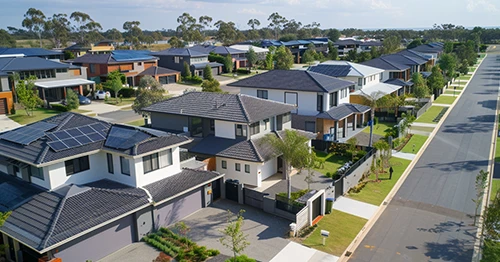Updated: 18 Apr, 2025
The Reserve Bank of Australia (RBA) has decided to keep the cash rate steady at 4.35% for May 2024.
Why Did The RBA Hold The Cash Rate In May 2024?
In its statement, the Reserve Bank’s board noted, “Inflation remains high and is falling more gradually than expected,” which underscores the difficulty in moderating the inflation rate. The board noted that “recent information indicates that inflation continues to moderate, but is declining more slowly than expected,” highlighting that the Consumer Price Index (CPI) growth rate, although reduced from previous quarters, still poses concerns.
The RBA’s statement also points to the labour-market dynamics contributing to this decision: “Conditions in the labour market have eased over the past year, but remain tighter than is consistent with sustained full employment and inflation at target. This suggests that while there has been some relaxation in labour market tightness, it’s still not enough to align with the RBA’s inflation and employment goals.”
Furthermore, the RBA expressed concerns about ongoing strong domestic cost pressures, particularly in the services sector, stating, “Higher interest rates have been working to bring aggregate demand and supply somewhat closer towards balance.” However, the board added, “The data indicate continuing excess demand in the economy, coupled with strong domestic cost pressures, both for labour and non-labour inputs.”
By holding the cash rate steady, the RBA aims to maintain a balance while carefully monitoring economic indicators.
“The outlook remains highly uncertain,” the board stated. It maintained that, “Returning inflation to target within a reasonable timeframe remains the board’s highest priority.”
What Do Our Experts Say About The RBA’s Decision?
Alan Hemmings, CEO of Home Loan Experts, notes, “As expected, the Reserve Bank held off making any changes to the cash rate this month. However, there is an ongoing conversation about what the next move will be, with some economists predicting an increase.
“Unfortunately, inflation hasn’t improved as much as hoped in the March quarter. Concerns about inflation are currently focused on the services sector, for things like rent, education and petrol – items that we cannot afford to reduce spending on.
“Normally, in a balanced economy, it is more than just the work of the Reserve Bank (monetary policy) that helps control inflation. There is also the work of federal governments (fiscal policy) and what they are doing to help slow spending – things like immigration, which affects rent and spending, do not help. The conversation needs to be about more than just interest rates to help bring inflation under control.”
So, what does it mean for you?
Hemmings advises, “For existing mortgage holders, the steady cash rate means some certainty – at least for another month. It’s always wise to review current interest rates to ensure they remain competitive. Prospective homebuyers should consider consulting with a broker to understand their borrowing capacity and the potential impacts of any future cash rate increases. Being prepared can help alleviate the stress of buying a new home.”
How Does The Cash Rate Affect My Interest Rate?
Lenders add a margin to the official cash rate to determine the variable interest rate they offer to customers. So, if you have a variable interest rate, it will almost certainly go up with a cash rate increase.
You can use our repayment calculator to find out what your new repayments should look like whenever the cash rate changes.







